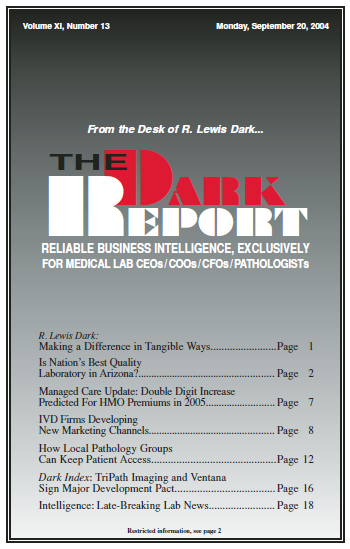THERE’S GOOD NEWS AND BAD NEWS from the 13th annual Milliman survey of HMOs. Milliman predicts that the rate of health premium increases will decline by 3.8% over last year’s survey. However, the average premium increase for 2005 is still predicted to be in double digits, at 11%. For the lab industry, this is definitely …
Double-Digit Increase Predicted For HMO Premiums in 2005 Read More »
To access this post, you must purchase The Dark Report.


